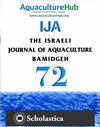Transcriptome analysis of Litopenaeus vannamei during the early stage of limb regeneration process
IF 0.5
4区 农林科学
Q4 FISHERIES
引用次数: 0
Abstract
Regeneration is a process in which organisms regrow new tissues or organs at the injury site, which has attracted the attention of many scientists and nonscientists. However, the underlying molecular mechanisms of regeneration after autotomy are largely unknown. In this study, we conducted RNA-seq sequencing on regenerated limb bud tissues of Litopenaeus vannamei at 0 hours post autotomy (0 hpa), 12 hours post autotomy (12 hpa), and 24 hours post autotomy (24 hpa). A total of 2,192 differentially expressed genes related to energy metabolism, transcription and translation, and epidermis development were identified between 0 hpa and 12 hpa, such as triosephosphate isomerase A, triosephosphate isomerase B, and zinc finger protein 367 that is upregulated in 12 hpa. Between 12 hpa and 24 hpa, 1,447 differentially expressed genes were identified that were related to cuticle development and energy metabolism, such as cuticle protein 6, which is upregulated in 24 hpa, and triosephosphate isomerase is downregulated in 24 hpa. The results indicated that energy metabolism, transcription and translation, epidermal formation, and chitin metabolism processes are involved during the early stage of limb regeneration. This study provides basic knowledge for investigating the molecular mechanisms associated with limb regeneration in crustaceans at the early regeneration stage.凡纳滨对虾肢体再生早期转录组分析
再生是生物体在损伤部位再生新的组织或器官的过程,引起了许多科学家和非科学家的关注。然而,自体切除后再生的潜在分子机制在很大程度上是未知的。在本研究中,我们对凡纳滨对虾(Litopenaeus vannamei)自切0小时(0 hpa)、自切12小时(12 hpa)和自切24小时(24 hpa)后再生的肢体芽组织进行了RNA-seq测序。在0 hpa和12 hpa之间,共鉴定出2192个与能量代谢、转录和翻译以及表皮发育相关的差异表达基因,如三磷酸异构酶A、三磷酸异构酶B和12 hpa上调的锌指蛋白367。在12 hpa和24 hpa之间,鉴定出1447个与角质层发育和能量代谢相关的差异表达基因,如角质层蛋白6在24 hpa时上调,三磷酸异构酶在24 hpa时下调。结果表明,在肢体再生的早期阶段,能量代谢、转录和翻译、表皮形成和几丁质代谢过程都参与其中。本研究为研究甲壳类动物早期肢体再生的分子机制提供了基础知识。
本文章由计算机程序翻译,如有差异,请以英文原文为准。
求助全文
约1分钟内获得全文
求助全文
来源期刊
CiteScore
0.90
自引率
16.70%
发文量
49
审稿时长
3 months
期刊介绍:
Information not localized

 求助内容:
求助内容: 应助结果提醒方式:
应助结果提醒方式:


